Construction projects run best when every part is in perfect harmony. All it takes is one underperforming subcontractor to disrupt the entire operation. When a subcontractor fails to meet expectations, it can lead to frustrating delays, shoddy work quality, and spiraling costs. And this doesn't just affect the current project—your company’s profitability and reputation can take a hit, too.
But here's the good news: you can safeguard your projects by implementing a formal prequalification process. It helps make sure that every subcontractor you bring on board is capable, reliable, and aligned with your project’s goals. In this guide, we'll provide a subcontractor prequalification form template to help you build a dependable team from the get-go.
Note: If you want to invite vetted subs for any project, try Downtobid. Our AI software scans your project plans, extracts all the scopes, and send personalized bid invites within minutes. Click here to try our software at no cost.
Key Takeaways
- Subcontractor prequalification forms assess qualifications and performance before engagement to prevent project disruptions.
- Template covers financial stability, safety records, reputation/performance, capacity assessment.
- Benefits: better estimates, minimized disruptions, safeguarded cash flow, long-term partnerships.
- Key metrics: working capital, EMR rates, OSHA incidents, references, equipment/labor capacity.
- Downtobid provides vetted networks with AI scope matching and personalized invites achieving 30% higher responses.
Subcontractor Prequalification in a Nutshell
You might already have a solid lineup of subcontractors you trust, but what happens when you expand into new territory or your usual team is stretched thin? Chances are you'll need to bring in new players, and a subcontractor prequalification form can help.
A prequalification form is a standardized document typically used by general contractors to assess subcontractors' qualifications, capabilities, and past performance before engaging them on a project. You can use these forms on a job-by-job basis, or you can distribute them periodically—quarterly or annually—to cover multiple projects during that period. This way, you can maintain a pool of vetted, reliable subcontractors ready for any job that comes your way.
Why You Need a Prequalification Template
One of the biggest advantages of prequalification often goes unnoticed: it allows your estimators to dedicate more time to preparing better construction estimates and securing projects with healthier profit margins. Instead of wasting hours sifting through bids from unqualified subcontractors, they can redirect the time to the more critical tasks. And it pays off in other ways, too:
- allows you to minimize disruptions and keep projects on track
- safeguards against cash flow issues or unforeseen bankruptcies
- helps build long-term partnerships based on mutual trust and shared goals, creating a network of reliable collaborators who are invested in your success.
How to Use Our Subcontractor Pre-Qualification Form Template
To keep things straightforward, our template covers four essential areas you need to check with potential subs. While the template is adaptable to your specific needs — you can add or remove questions as necessary — most of the questions are designed to assess the following critical areas:
- Capacity
- Financial stability
- Safety and insurance
- Reputation and performance history.
You can download the subcontractor prequalification form template filetype:pdf here.
Financial Stability
Subcontractors need a good amount of cash flow to get the job done. From covering labor costs to purchasing materials, they often have to foot the bill upfront, which can mean managing substantial cash outflows until they receive payment from you.
That’s why reviewing a subcontractor’s finances is crucial right from the start. Understanding what type of financial statements you’re looking at—whether audits, reviews, compilations, or internals—gives you a clear picture of their financial health.
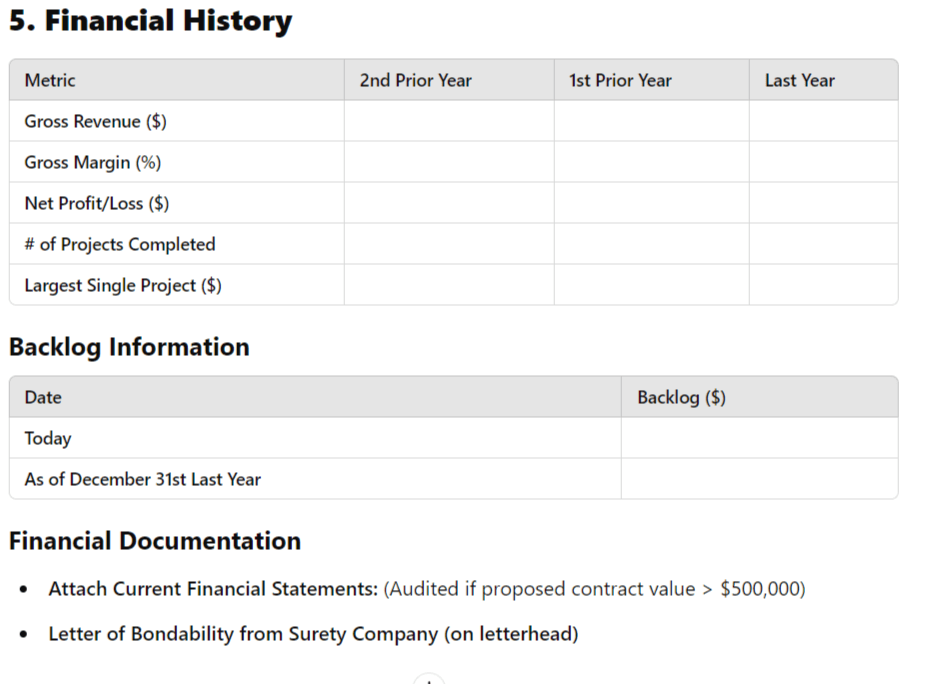
A handy tip is to compare these financial ratios with similar companies in the same industry. This benchmarking can provide valuable insights into their current financial standing and stability. A few key financial ratios you can pay attention to include:
- working capital
- current ratio
- income statement
- debt to equity
- financial statement
- days in accounts receivable
- days in accounts payable
Another critical aspect is bonding. Bonding assures that if the subcontractor can’t complete the job, the bonding company steps in to cover financial losses up to the bonded amount. Find out who their current surety provider is, their agent’s contact details, and specifics like bond rates for different project sizes and their bonding capacities.
Safety Records
Construction is a high-stakes industry. Accidents not only disrupt workflow but can also cause serious harm to workers and significant financial setbacks to projects. That’s why having safety-focused subcontractors is crucial — they make sure everyone gets home safe and sound.
To that end, you need to first understand whether the potential subs have had any citations issued and their Experience Modification Rate for the previous three years. The EMR gives you a sense of their safety track record compared to industry norms. A lower EMR usually means they have solid safety practices and fewer accidents.
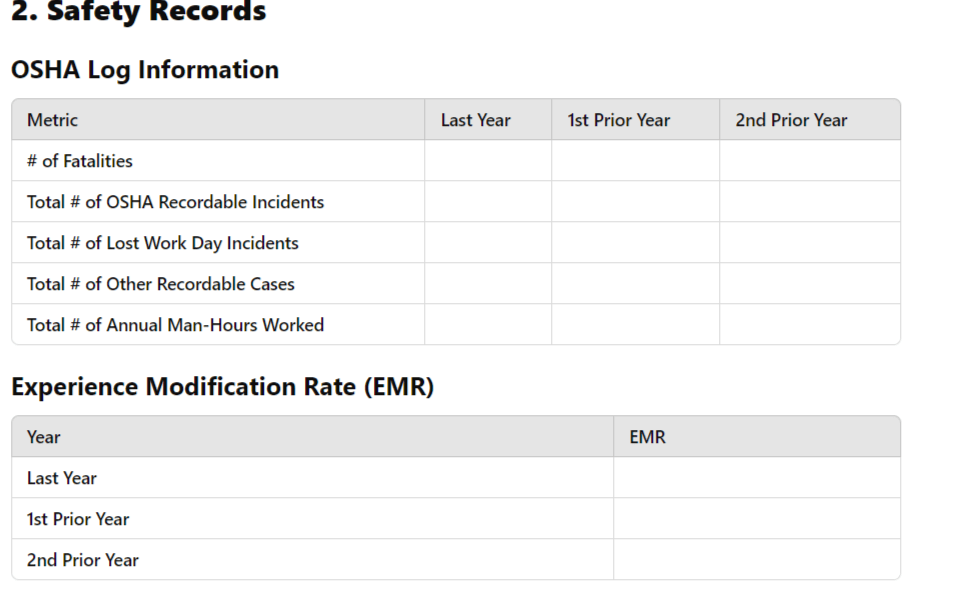
The OSHA recordable incident rate is another key metric to consider. It shows how many work-related injuries or illnesses required medical treatment beyond first aid, restricted work activity, or resulted in days away from work. A low incident rate suggests effective safety protocols and reduces the risk of project delays due to accidents.
Ask specific questions about their safety record and request their claims history for the past five years. This information is typically provided annually for insurance renewals and gives insight into their commitment to safety and risk management.
Reputation and Performance History
A subcontractor with a proven track record of successful projects is often a reliable choice. You should look for evidence of technical expertise, consistent delivery of high-quality work, and the ability to stay on time and within budget.
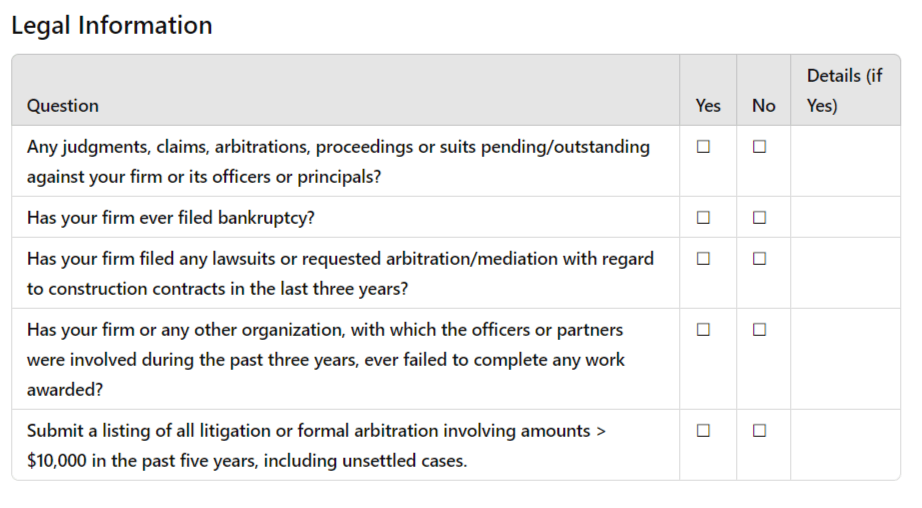
Ask for three to four references who can vouch for the quality and reliability of their work. Check if the company or its management team has faced issues like project terminations, bankruptcies, or legal disputes.
Capacity
Having the right experience is crucial, but it’s not always enough. Subcontractors also need the capacity to handle the workload effectively. Start by evaluating their labor resources. Do they have enough skilled workers available to do the job well? Can they scale up their workforce if needed?
Next, look into their inventory of equipment, tools, and resources. Make sure they have access to—or own—the necessary machinery, vehicles, and specialized equipment required for the project. This ensures they can deliver without delays.
Check their organizational structure too. Review their staffing levels and qualifications across the board, from project managers and supervisors to skilled laborers. Strong leadership and a capable workforce are key indicators of their ability to manage and execute projects smoothly.
Why You Need Access to the Right Subcontractors
Before you can even start vetting subcontractors, you need the right options. You can have a comprehensive prequalification template ready to go, but if you’re limited to just a few subcontractors, your hands are tied. It prevents you from finding the perfect match for your project’s unique requirements—whether it’s:
- expertise in a particular type of construction
- availability in a certain location
- or capacity to handle the scale of your project
In essence, having limited options defeats the purpose of thorough vetting
So, how do you get access to a variety of subcontractors? You can tap into our extensive network of subcontractors or gain access to a carefully curated list of local, qualified subs. Simply upload your project plans, and we'll provide you with the contacts you need to start building your team.
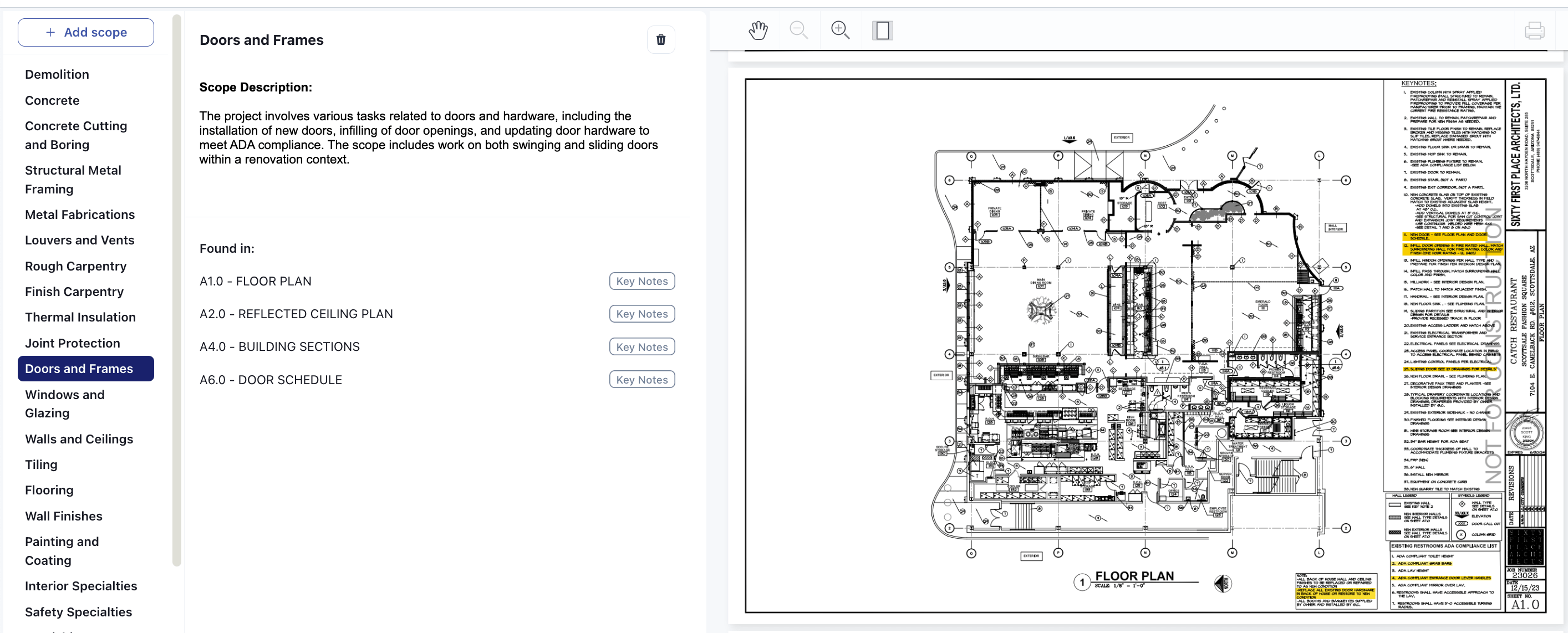
Once you have access to this pool of subcontractors, then you can begin the prequalification process. Send them our prequalification form and see if there's a perfect fit.
Why You Can Trust Downtobid
When we were building our subcontractor network, we looked into platforms like PlanHub and BuildingConnected for their extensive subcontractor databases. But we encountered a couple of roadblocks. One big issue was outdated data. It was common to find subcontractors listed under the wrong trades or with incorrect contact info. This meant a lot of manual cleanup before we could present any reliable options.
Plus, the platforms' generic emails hardly received any responses. Turns out, subcontractors are less responsive to impersonal emails from bid platforms.
Downtobid solves these challenges in two ways. Firstly, to build a reliable subcontractor network, we:
- identify potential subcontractors in the target area
- vet them through their online presence
- make sure we have their latest contact information
- reach out directly to fill in the gaps if anything's missing
When you upload your construction plans and documents, our AI Copilot scans every plan set or bid invite, pinpointing scopes relevant to your trade. It then recommends ideal subcontractors you can invite to bid on different parts of your project.
Secondly, we use personalized bid invites to make sure your ITBs aren't getting lost in potential subs' inboxes. Our bid invite templates contain key details about your construction project like location, size, deadline, and scope summary.
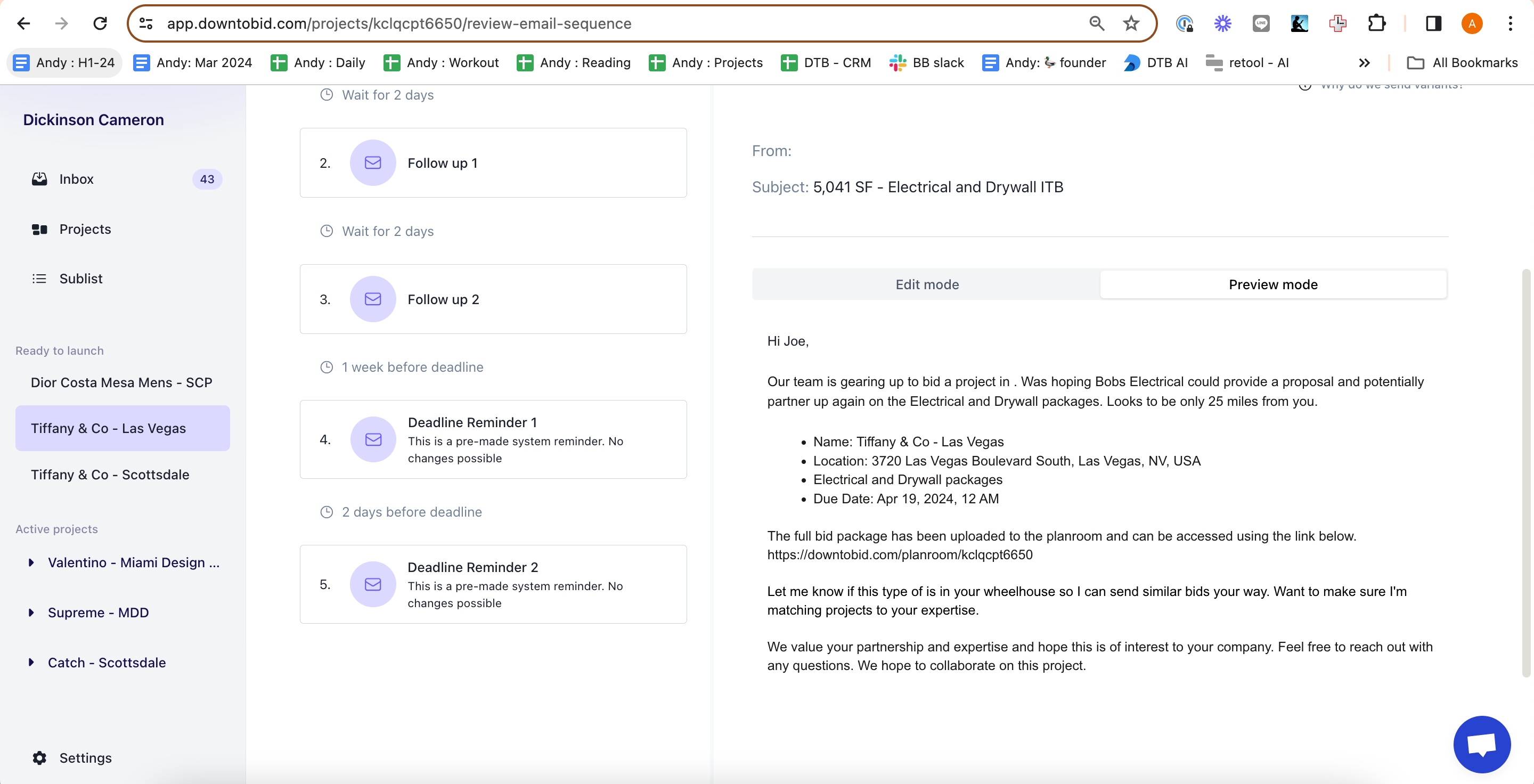
They’re crafted to:
- Target subs based on their specific expertise.
- Use catchy subject lines and clear scope summaries.
- Acknowledge their skills and know-how
As a result, our users typically experience response rates that are 30% higher on average. Best of all, uploading your plans is completely free. You can try it out today.